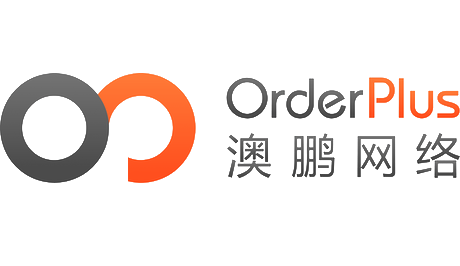报价单验证系统已上线
如何知道自己收到的报价单是否为 ChinaAndWorld 官方渠道提供的呢?从2023年开始,任何渠道客户的报价单将开始使用统一的防伪码,以防止虚高报价的情况发生,维护客户和渠道商权益。那么,这个二维码是如何使用的呢?
Learn more首先,我们使用微信扫一扫功能扫描报价单右下角的防伪码
我们会进入验证页面,提示我们此报价单是否是 ChinaAndWorld 的官方报价:
点击“支付“即可微信或支付宝支付此报价单
还没有开始服务?赶快联系您的销售顾问开始吧!
既可以选择大而全的总包式服务,也可以提供定制化的服务。
您只需提供货品,我们帮您出海。覆盖各种技术架构的独立站、苹果iOS与安卓Android生态APP、以及国外各大电商平台。品牌、技术、营销一网打尽,联合运营服务是您开创新业务、改善财务状况、提升公司市值的有力帮手。
专⻓于为成⻓或转型中的品牌提供侵略性策略及执行,主攻差异化定位及心智资产管理,为全球消费品牌打造超高广告ROI。
当地人最懂当地消费者,我们在全球177个国家和地区拥有营销专家网络,覆盖美洲、亚洲、欧洲、非洲30多门语言,深度微调每一个词语的感情色彩。
一边是处处受限的平台模版,一边是动辄数千万的开发团队成本和失败风险。我们带领客户计划和执行全球领先的技术及产品战略,从卖家细分赛道的消费者生活习惯入手,打造用户浸入式场景购物应用。
使用我们自主研发的ChinaAndWorld.js,记录、跟踪、分析、部署全渠道数据,利用机器学习将每一个流量发挥到极致,演绎商业模式迭代全自动闭环。
串联线上和线下广告,矩阵式投放所有市面上的渠道广告,洽谈当地线下合作商及网红推广,针对核心瓶颈打造定制化用户留存及裂变产品。



我们服务过许多行业的头部多家公司,拥有独特的横向视角和眼界。不仅了解每个行业不同玩家全局的玩法,帮客户全面多角度认知自己的优势劣势;而且可以将其他行业的最新最in的实践应用在您的行业里,快速形成创新商业模式闭环,形成时间差降维打击。
最大的风险不是走错了路,而是无法正确认知自己,没有全局观去看到自己的阿喀琉斯之踵(Achilles' Heel)。






过去发生的事件是预测未来最有效的数据。我们团队取得过无与伦比成绩、丰富的各行各业经验、全球文化深刻的理解、和全细分领域的无上专业度。


口碑是最好的营销。
“黑色星期五起量如此成功,ChinaAndWorld 有很大的功劳。”
“我们的大客户很荣幸能够被 ChinaAndWorld 服务。”
“ChinaAndWorld 服务找的点很好,都是能直接帮助客户扩大盈利。”



中国品牌出海的半壁江山。









关注我们,获取最新资讯。
如何知道自己收到的报价单是否为 ChinaAndWorld 官方渠道提供的呢?从2023年开始,任何渠道客户的报价单将开始使用统一的防伪码,以防止虚高报价的情况发生,维护客户和渠道商权益。那么,这个二维码是如何使用的呢?
Learn more首先,我们使用微信扫一扫功能扫描报价单右下角的防伪码
我们会进入验证页面,提示我们此报价单是否是 ChinaAndWorld 的官方报价:
点击“支付“即可微信或支付宝支付此报价单
还没有开始服务?赶快联系您的销售顾问开始吧!
It seems that everybody is talking about supply chain problems: from wars in Ukraine to Covid-19 outbreaks in China. It seems the fault always lies in so-called “autocratic” side of the world. But is it really?
Learn moreTo understand this issue, we need to divide the possible explanations of the inflation into two categories: one possibility is that world’s supply is diminishing (a.k.a. Supply Push) and the other possibility is that the world’s demand is increasing (a.k.a. Demand Pull).
On the supply side, wars in Ukraine decreases the aggregated supply in Ukraine for sure, but definitely not the supply in Russia. Most of the Russian supply is merely redirected - to China, India, Vietnam and other developing nations, potentially stabilized the prices in the global south. Russia’s economy is expected to grow 3.7% in Q1 2022 (not verified yet). Covid-19 pandemic halted certain regions in China creating societal pressures in some cities in eastern China, destroying newly rebounded service economy, but the manufacturing output has largely remain intact, which does not contributing to much of the “supply chain” issue that every mainstream media and CEO is talking about (or blaming their problems on).
But people in many developing countries are demanding the change of government due to skyrocketing inflation - something must be wrong, right?
Yes. Let’s look at the demand side of the equation. During the pandemic, the Fed printed large sum of, trillions of dollars of, helicopter money - money that goes directly to American citizens’ pockets. The money goes into two places: personal spending and stock market speculation which in turn becomes business spending. Trillions of dollars, coupled with near-zero interest rates, exponentially increased the aggregate demand of the U.S. - the largest economy in the world, sucking up world’s resources including food and commodities from all over the world onto the U.S. soil. This sudden increase in world’s aggregate demand hit the supply chain like a shock wave - stretching waiting lines in Los Angeles port miles after miles and jacking up American wages like never before. The latter became all the talking points of the Biden administration.
But there’s a catch. Demand-pull inflation will bump wages in the absence of productivity growth. By adopting this method of fighting the pandemic, U.S. further pushes up the price of U.S. produced goods without quality improvements. That is why you see the headline number from yesterday that U.S. GDP contracted by 1.4%, driven by a 3.2% net export contraction.
What’s next? The Fed will likely continue tapering and aggressive rate hikes, resulting in international capital flow back to the U.S. promoting U.S. dollar strength and reduce U.S. aggregate demand. This definitely solves the demand issue but clearly won’t solve the negative trade balance issue in short term. We are not professional economists on U.S. economy and stock-listed corporations but we believe they will likely face strong headwinds in the coming quarters for this reason.
What about the rest of the world? Like what we discussed in the last episode, many country will face scarcity in food and commodities, resulting in political upheavals all around the world. Especially for those countries running a non-internationalized currency, and, at the same time, runs net trade deficits, a dump in local currency, a stronger dollar and the sudden increase of U.S. purchasing power will outbid the people in those countries, leaving them with no food to eat.













